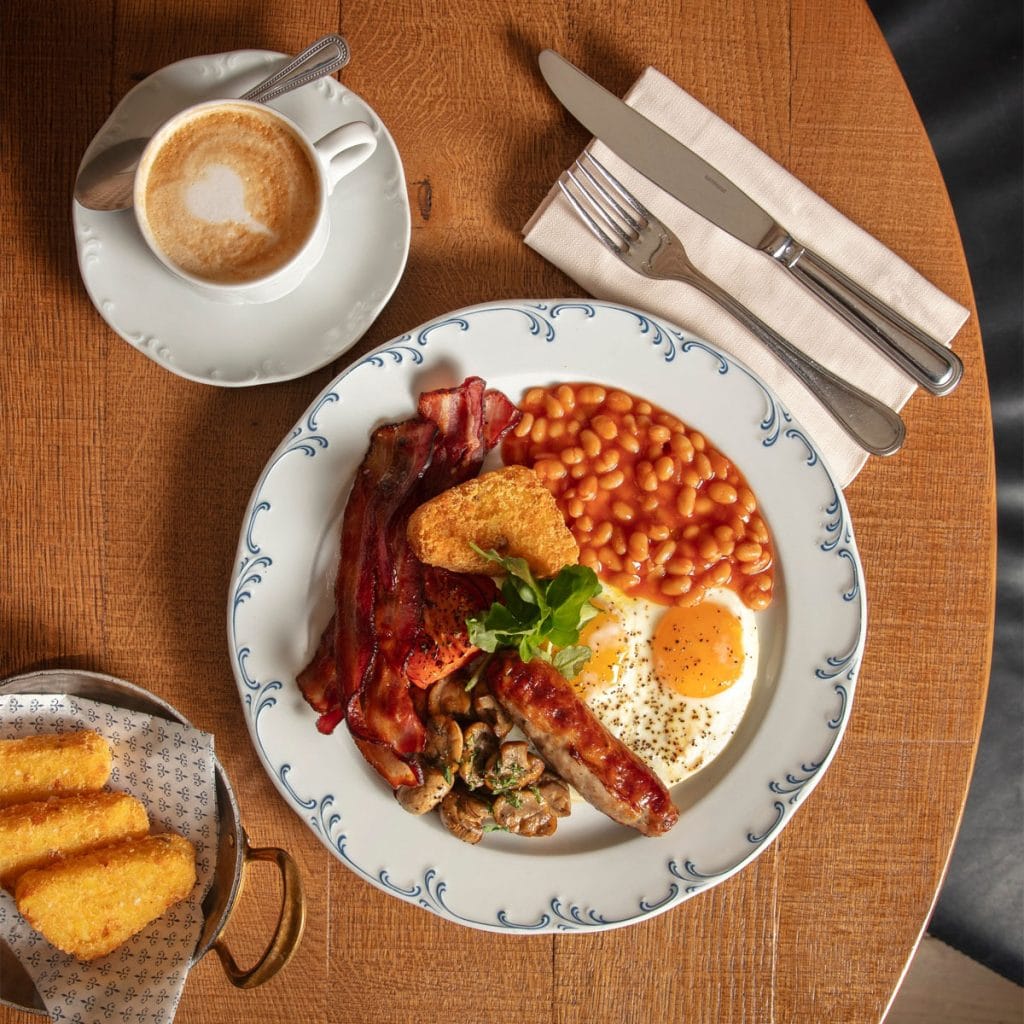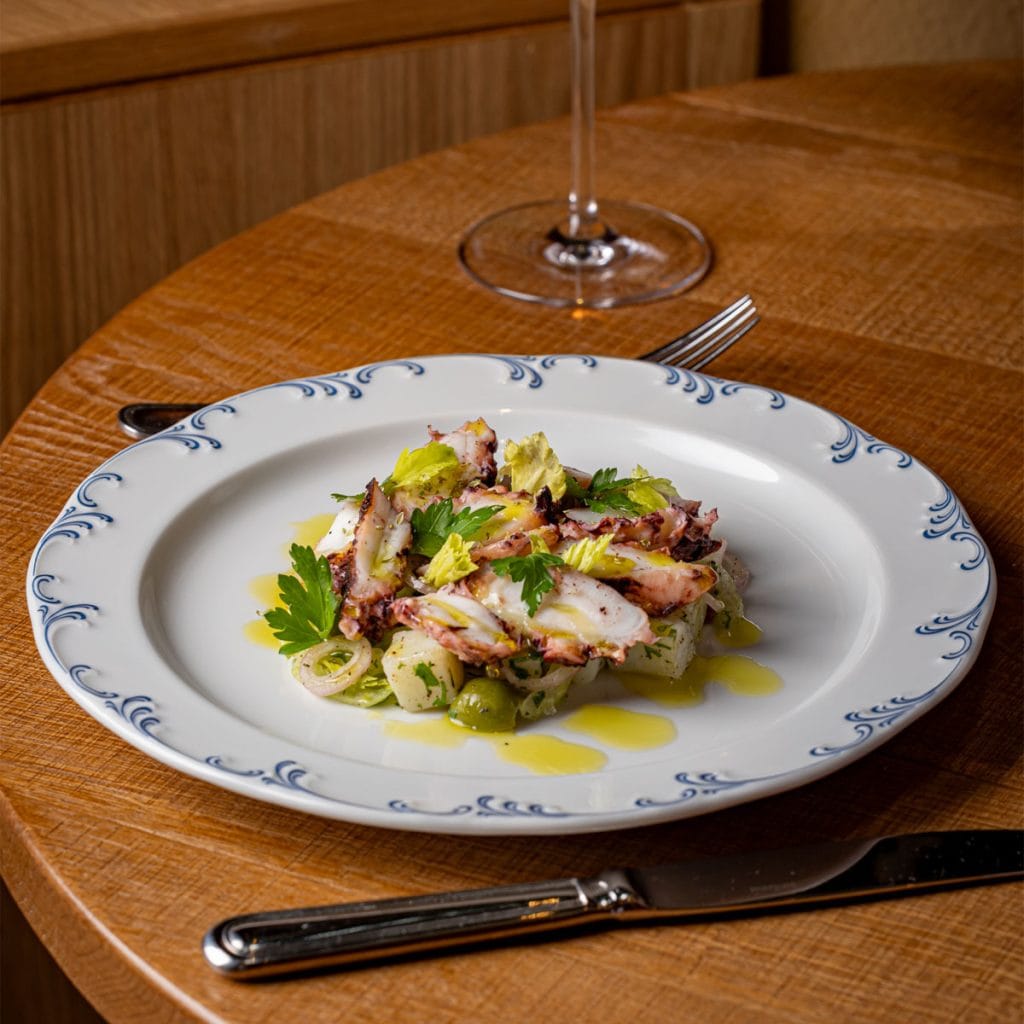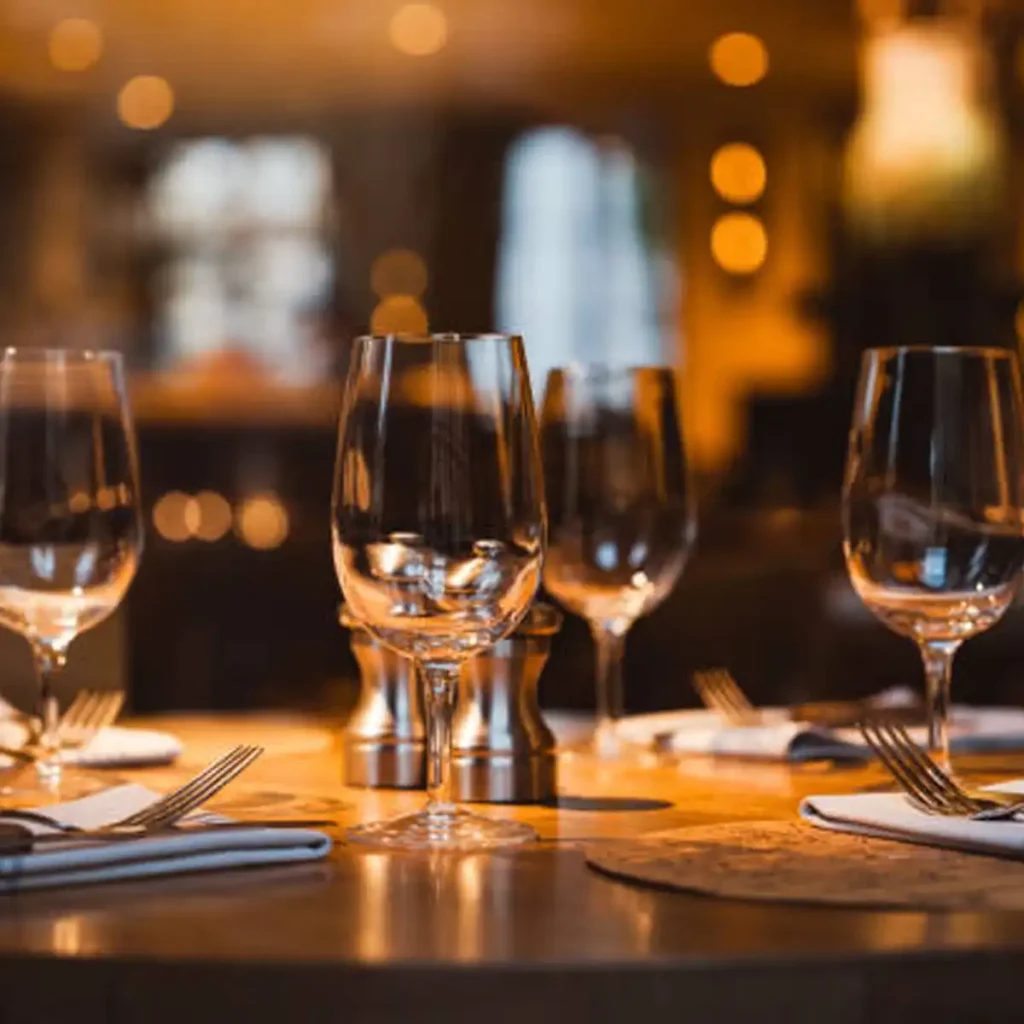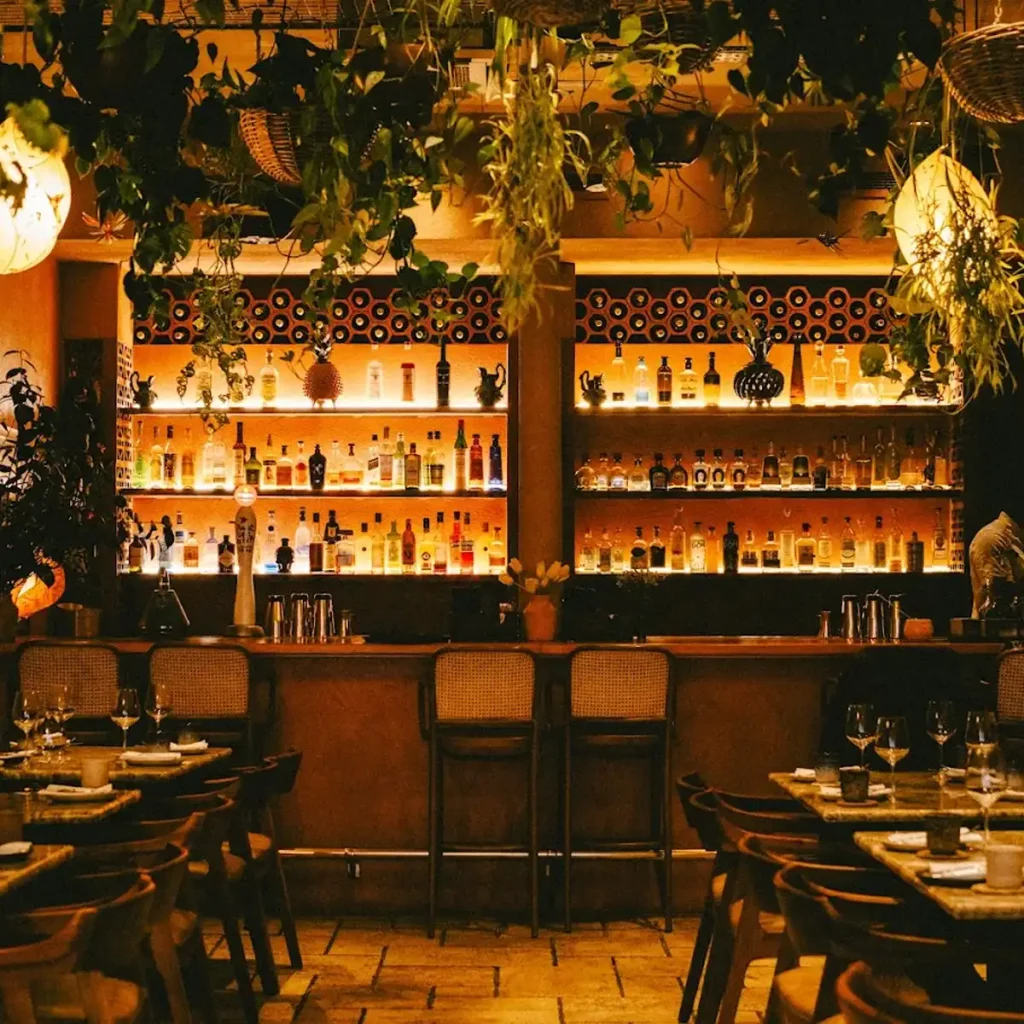Londoners are not easily impressed. Every month a fresh contender announces itself, promising the “next big thing” and counting on the capital’s appetite for novelty. When LAVO flung open its doors in September 2023, the promise felt different. This was the European debut of a brand already polished in Los Angeles, Las Vegas, New York, San Diego and Singapore. Its parent, Tao Group Hospitality, commands more than eighty restaurants, bars and clubs across the world, so LAVO arrived with built-in swagger. Rather than whisper its presence, the team celebrated: a launch party packed with Hollywood regulars signalled that Marylebone would be their new London address.
The classic question followed. Could an import capture London’s distinctive rhythm, or would it feel like a transplanted set piece? Early signs suggest the former. By positioning itself at the exact meeting point of Marylebone, Mayfair and Soho, LAVO claimed a story bigger than bricks and mortar – a story about convergence in a city where neighbourhood borders often dictate dining identity.
The BoTree Alliance and the Power of Place
LAVO’s chosen stage is The BoTree, a newly-built five-star hotel that replaced a gloomy multistorey car park with warm limestone, trailing greenery and vast panes of glass. The partnership is strategic. The BoTree preaches “Conscious Luxury”, a philosophy rooted in sustainability and community links. LAVO, famous for high-octane fun and table-side theatrics, looks at first glance like a mismatch. Instead, the two concepts reinforce one another. The hotel supplies substance through ethical sourcing and local engagement. LAVO supplies spectacle and late-night buzz. The result is an address that feels rooted in Marylebone’s village texture yet confident enough to compete with glitzier corners of the West End.
Locals know that Marylebone Lane is a slim, slightly crooked street lined with cafés and independent boutiques. By placing their entrance here rather than on a grander thoroughfare, Tao Group signposted a desire to belong. Guests step from the pavement into a lobby scented with citrus and jasmine, a sensory nod to the “Mediterranean garden” design concept. That first breath sets the mood before anyone sees the bar.
Design Split: Sunshine and Shadows
Concrete, the Amsterdam studio behind much of Soho House’s recent work, handled interior architecture. Their brief was twofold. Create a light-soaked daytime space to lure freelancers, local residents and travelling CEOs, then shift gears after dark to deliver the escapism associated with LAVO’s American siblings. The solution occupies two floors.
On the ground level, triple-height ceilings punctuated by skylights pour natural light across caramel leather banquettes. An elegant fireside terrace points towards Marylebone High Street, encouraging casual breakfasts of espresso and sfogliatella. Artisans supplied pale timber panelling and hand-painted botanical murals, softening what could have felt like a corporate foyer.
A staircase sweeps down to the main dining room. Here, the mood turns sultry. Stone floors, exposed brick and a handsome olive tree set inside a living wall suggest a Tuscan courtyard glimpsed at midnight. Lighting rests in the warm amber range, polished to a metallic glow by brushed bronze fixtures. Music matters. A curated playlist builds from acoustic lunchtime beats to after-dinner house rhythms, measured to encourage that uniquely twenty-first-century phenomenon – vibe dining.
The split personality is more than decoration. It lets LAVO work multiple dayparts and price points. Sunlit mornings cater to informal meetings. Evenings invite heels, linen jackets and champagne by the magnum. Turnover multiplies without diluting brand clarity.
Fun Fact: The site once housed an NCP car park. EPR Architects recycled over two hundred tonnes of concrete from the original structure, transforming traffic fumes into a five-star canvas.
From Giant Meatballs to Silk Handkerchiefs
Chief Culinary Officer Ralph Scamardella and Head Chef Stefano Lorenzini frame the menu around “coastal Italian” cooking filtered through an American lens. London diners crave authenticity, yet they also queue for novelty. LAVO answers both impulses.
First, the spectacle. A single 500-gram meatball of Wagyu beef and Italian sausage arrives on a copper platter, sliced like a birthday cake and ladled with marinara. Cameras click, videos roll and social media does the marketing heavy lifting. The twenty-layer chocolate cake follows similar logic. Each slice stands taller than a smartphone, glossed with peanut butter mascarpone, and invites collective disbelief.
Yet beneath the theatrics lies craftsmanship. Pasta – made daily in a temperature-controlled chamber – wears classical sauces. The “Silk Handkerchiefs” carry wild boar white ragù and shaved black truffle, a dish praised by critics who feared the kitchen might rest on Instagram laurels. Whole-grain pizza bases prove evenly blistered, thanks to a custom gas-fired oven imported from Naples. Charcoal-grilled octopus arrives with Amalfi lemon dressing, adding restraint to an otherwise exuberant script.
Drinks echo the dual approach. The LAVO Negroni allows guests to pick their preferred gin, playing to London’s mixology obsession. Meanwhile, the LAVO-lini, a playful riff on the Bellini, blends prosecco with passion fruit purée and a whisper of vanilla.
For those unwilling to commit to a full evening blow-out, weekend brunch in London becomes the gateway. Priced at forty-four pounds, it includes a welcome cocktail, antipasti bar and a main such as truffle-topped scrambled eggs. The format nudges curious locals to sample the brand without crossing the hundred-pound barrier.
Crafting an Identity Beyond the Poster Boys
Tao Group’s star-studded opening night ensured paparazzi coverage, yet celebrity flashbulbs alone will not satisfy Marylebone residents seeking a dependable neighbourhood spot. Reassuringly, Chef Lorenzini brings London credentials from Santini, Cecconi’s and Shoreditch House. His presence anchors the kitchen in European discipline, offsetting the potential for empty extravagance.
Equally important is service. LAVO’s marketing draws direct lineage to Michelin-starred siblings Hakkasan and Yauatcha. Diners arrive expecting considered pacing, unobtrusive topping-up and staff who recall favourite wines. Early feedback suggests warmth and enthusiasm, though there have been reports of disorganisation during peak hours. A staff-training programme led by Tao Group’s Las Vegas veterans is already underway. The aim is simple. Match the energy in the room with precision on the floor, ensuring the performance never overshadows hospitality fundamentals.
Why the West End Needed a Shot of New York Flair
Marylebone has long balanced genteel residential character with pockets of glamour. Chiltern Firehouse offers discreet exclusivity, Fischer’s channels Viennese comfort and Orrery embodies classical French formality. LAVO positions itself between these poles, presenting an in-your-face celebration tempered by Italian culinary heritage. The approach taps into global travellers looking for upscale Italian dining that feels current rather than traditional. For London’s social crowd, it becomes a stage upon which to celebrate promotions, birthdays or simply Saturday night.
Notably, LAVO enhances the BoTree’s appeal as a stopover for fashion buyers, tech investors and creative directors. Its proximity to Selfridges and Bond Street means a late lunch can slide seamlessly into an afternoon of retail research. For overseas guests keen to tick multiple London experiences in one trip, a single lift ride links boutique hotel room and buzzy dining room – a clear advantage in winter rain.
By introducing New York flair to Marylebone restaurants, LAVO has broadened the neighbourhood’s repertoire. It respects the village atmosphere by offering daylight-filled breakfasts. It pulls in outsiders with thumping after-dark energy. The duality secures a steady revenue stream while preventing accusations of franchise-style detachment.
Measuring the Magnetism in a Data-Driven City
Even in a capital saturated with openings, certain rooms generate louder noise. LAVO’s entrance sent search traffic for its name up by fifty-eight per cent in the fortnight after launch, according to Google Trends. Instagram posts tagged #LAVOLondon passed the ten-thousand mark before Christmas, a striking velocity that mirrors the Las Vegas branch in its first year. Behind the numbers sit familiar faces. Naomi Campbell celebrated a Fashion Week after-party at the lower-ground level, while Idris and Sabrina Elba used the bar for a charity cocktail event. Paparazzi flashes help to lure newcomers, yet repeat bookings depend on locals. The restaurant’s public relations team therefore shifted strategy in spring, partnering with neighbourhood boutiques for shopping and lunch packages that appeal to residents as much as tourists. The move recognises that Marylebone dining thrives when businesses collaborate rather than compete.
Service, the Final Frontier
London diners forgive many things, but they will not accept lacklustre hospitality at three-figure prices. Tao Group’s leadership admits the opening weeks exposed pain points. Staff drawn from night-club backgrounds sometimes struggled with early-morning breakfast pacing, and a few inexperienced recruits underestimated British expectations around tableside etiquette. An intensive retraining programme followed. Floor teams shadowed senior colleagues from Hakkasan, studying the choreography that keeps water glasses filled and wait times invisible. Management also introduced a roaming sommelier system, removing the need for guests to flag down busy servers when they want another bottle of Barolo. Latest feedback suggests the effort is working. OpenTable ratings averaged four stars for service in May, a meaningful rise from the previous 3.6 in January. The next challenge is consistency on Fridays when the dining room can seat two hundred covers in one evening. If LAVO sustains that upward curve, it will validate the belief that high-octane settings can still deliver old-school polish.


Understanding the Price Tag
A typical dinner for two, including antipasti, pasta, a shared main and a bottle of mid-range Super-Tuscan, lands at roughly one hundred and twenty pounds per head. That figure positions LAVO just under the West End’s flagship Italians such as Locanda Locatelli, yet above neighbourhood stalwarts like La Fromagerie’s kitchen. The question is value. Portion sizes tip towards generous, particularly the one-pound meatball and the twenty-layer cake, which cheerfully feeds four. Diners, therefore, comment that the bill feels easier to justify on celebratory nights than during a mid-week dash. Brunch provides a softer entry point. The forty-four-pound package includes antipasti and dessert buffets broad enough to satisfy vegetarians, pescatarians and gluten-free guests in one sweep. Little wonder the service clocks up nearly two hundred covers between ten and three every Saturday. No other Italian restaurant London side street manages that throughput while maintaining a relaxed face.
London’s Italian Renaissance
The capital is experiencing its most energetic Italian moment since the early 2000s. Heavyweights Carbone, Funke and Langosteria are preparing to land, while home-grown operators like Manteca expand east towards Hackney. Analysts credit this surge to a post-pandemic craving for comfort food presented with theatre. LAVO’s success proves the formula, yet it differentiates itself through American largesse. Where Carbone offers New York nostalgia, LAVO doubles the scale and brightens the palette. Where River Café leans on Tuscan purity, LAVO blends that coastline with Manhattan audacity. The strategy fills a gap between heritage and hedonism. As one critic wrote, it is “the closest London comes to Saturday night on Madison Avenue, but you can still order burrata that tastes of Puglia”. That duality keeps LAVO distinct in an increasingly crowded field.
Conscious Luxury in Action
The BoTree’s eco-commitment could have been a tick-box add-on. Instead, it frames operations from plate to playlist. The kitchen sources seventy per cent of produce from within two hundred miles, working with Kent’s Natoora network for seasonal vegetables and a Devon fishery that lands daily at St Pancras by rail. Cooking oil is converted into biodiesel through a partnership with Olleco, while coffee grounds fertilise local allotments. Even cocktail garnishes observe a closed-loop ethos. Dehydrated citrus slices from one night’s Palomas reappear as zest in the next morning’s pastries. These choices matter to Gen Z diners who research provenance before making reservations. They also reinforce the hotel’s stated ambition to define sustainable luxury in practice rather than in press releases.
Fun Fact: The olive tree at the centre of the dining room is more than a photo backdrop. It is a ninety-year-old specimen rescued from an Apulian grove scheduled for redevelopment. Specialists nursed it through a two-year quarantine before replanting it in Marylebone.
Bridging Nightlife and Neighbourhood
Marylebone once shut its doors before midnight. LAVO extends activity until two in the morning on weekends, providing a West End alternative to Soho’s older venues. The late license brings issues of noise and crowd management. Security staff therefore, escort taxis along quieter side streets, and managers coordinate with local councillors to monitor footfall. The payoff is evident. Oxford Street shoppers drift in for post-retail espresso martinis. Artists finishing performances at Wigmore Hall cross Mandeville Place for squid ink linguine. By stitching these micro-communities together, LAVO evolves from novelty to anchor. It also refreshes London nightlife by proving that high tables and decent club lighting can coexist with pasta rolled by hand.
Celebrity Dining Without the Red Rope
Some restaurants build exclusivity through high entry barriers. LAVO prefers visibility. A-listers dine alongside office parties and young couples, creating a mixed theatre where everyone is audience and performer. Management resists velvet rope tactics, confident that the product speaks loudly enough. Social proof arrives through organic sightings, then circulates online. Google Maps reviews mentioning “celebrity” rose by twenty-nine per cent between February and May. The tactic turns diners into storytellers, extending marketing reach at no extra cost. In a city where competition for attention is relentless, that word-of-mouth advantage keeps LAVO ahead of the curve in celebrity dining in London.
The Brunch Effect
Weekend brunch has become LAVO’s secret recruitment tool. Tables turn twice on Saturdays and sometimes three times on Sundays, introducing hundreds of first-timers to the brand each week. The appeal lies in predictability. Guests know they will receive free-flow antipasti, a headline main and a dessert station piled with mini cannoli. They also know the playlist will rise in tempo as the afternoon progresses. This reliable formula encourages group bookings. Birthday celebrants select the space for its sense of occasion, then return months later for dinner. TripAdvisor data shows forty-three per cent of brunch visitors follow up with an evening reservation within twelve weeks. That conversion rate underscores brunch’s power as a funnel, and cements LAVO’s claim to best brunch in Marylebone.
Hotels, Revenue and Reputation
Restaurant-hotel partnerships succeed when both parties enhance one another. For the BoTree, LAVO provides occupancy insurance during slower months. Mid-March saw an unexpected surge of visitors from the United States when Miami media outlets ran features on LAVO’s European debut. Occupancy jumped eight points inside a fortnight, taking the hotel above ninety per cent while many competitors hovered around eighty. Conversely, the hotel safeguards the restaurant’s standards through five-star benchmarks. Housekeeping polishes glass fascias between meal periods, and concierge staff steer guests towards tables tailored to their mood. This synergy strengthens The BoTree’s standing among five-star hotels in London, while giving LAVO a baseline of affluent footfall.
A Neighbourhood Perspective
Marylebone residents guard their village sensibility fiercely. They welcome newcomers who respect the scale of Georgian streets and the hum of independent shops. LAVO wins points by opening its ground-floor café at seven each morning, serving espresso to dog walkers and pushing croissants out of the pastry counter before commuters board the tube. Local dog charity All Dogs Matter receives donations from pastry sales every quarter, a gesture that transforms a corporate brand into a friendly neighbour. The gesture also aligns with BoTree’s promise to “connect with community”. As one resident told this writer, “It is big, but it behaves politely”.
Final Reflections and Actionable Takeaways
LAVO Marylebone has achieved the rare feat of importing an American formula without flattening London nuance. It merges coastal Italian craft with big-city vitality, wrapping the mix in a design that moves from daylight calm to nightclub sparkle in the span of a staircase. Service has improved, sustainability targets feel genuine and the brunch programme introduces fresh audiences every weekend. The next test is durability. Celebrity sightlines will fade if dishes slip or if staff forget names. Management appears aware. Training continues, menus evolve with seasons and partnerships keep it plugged into the streets beyond the hotel doors. For diners wondering whether to commit to a three-digit dinner, the safest first step is brunch. Taste the silk handkerchief pasta, share the meatball, then decide if the night-time show deserves a second visit.
Like any live performance, a restaurant must rehearse daily, listen to its audience and never rely on the applause of yesterday. Success is earned service by service, plate by plate. As the old saying goes, slow and steady wins the race.



